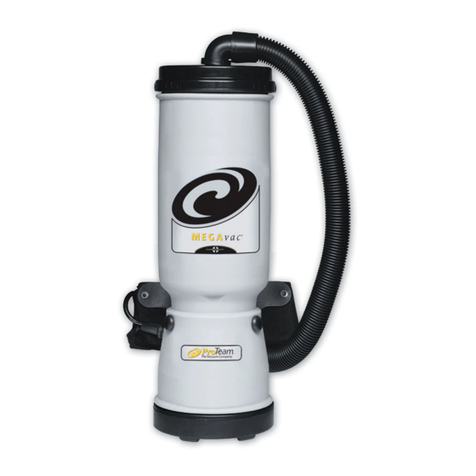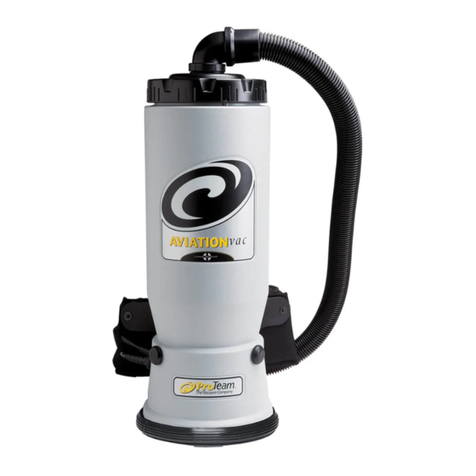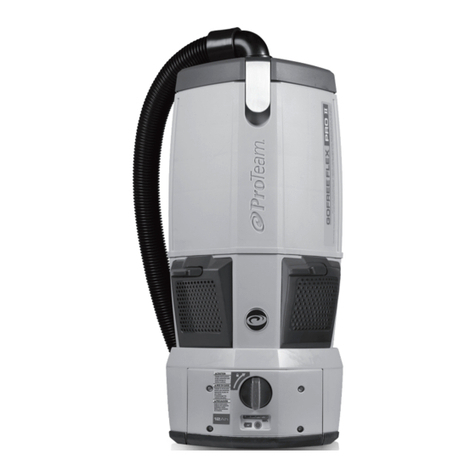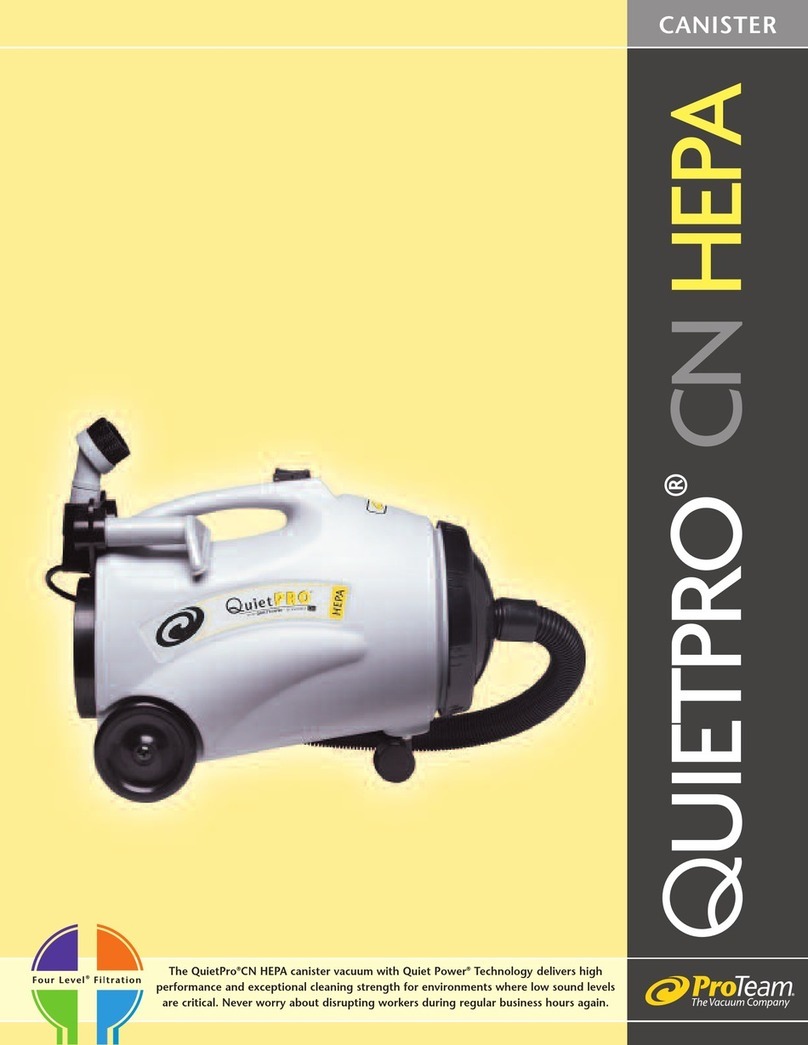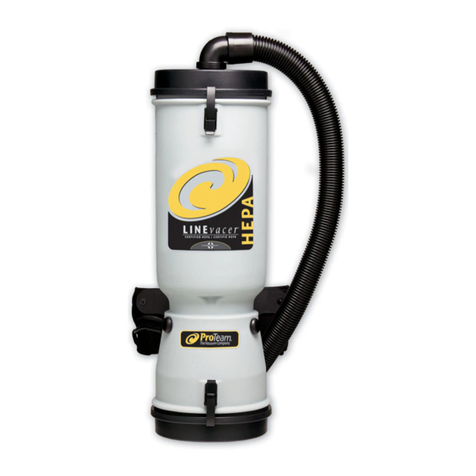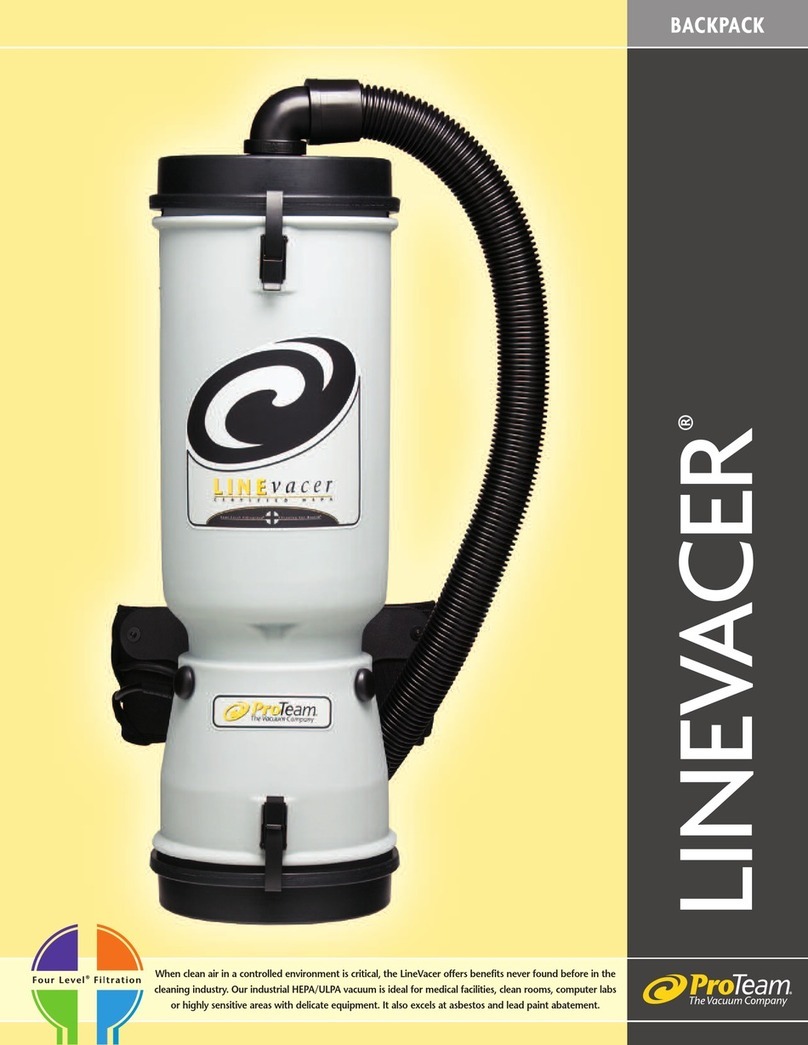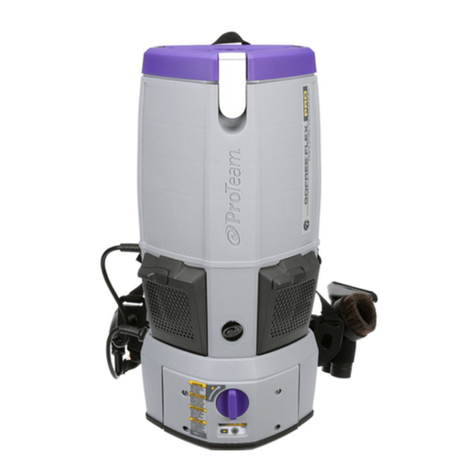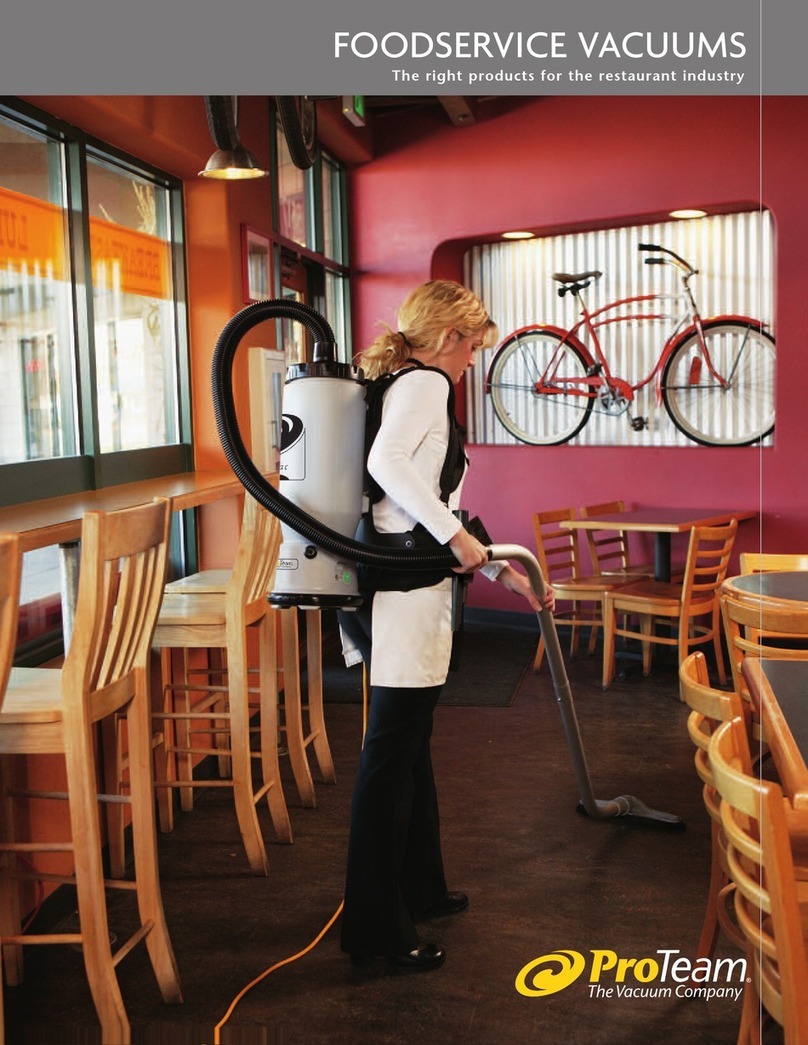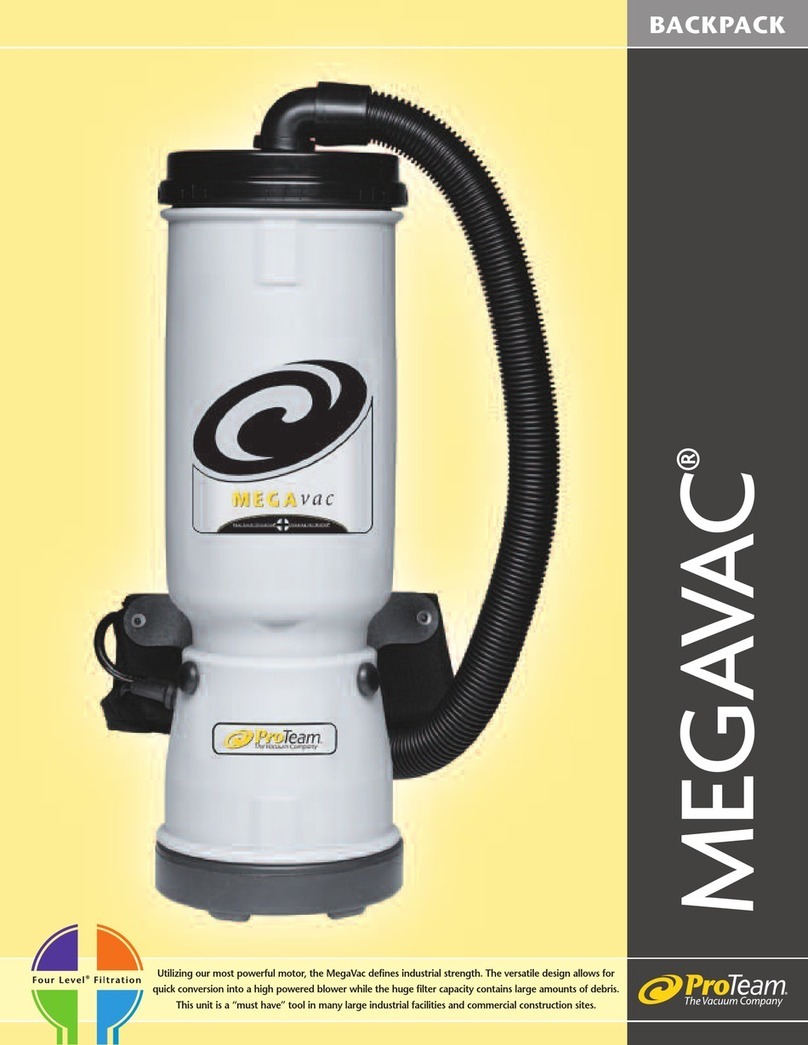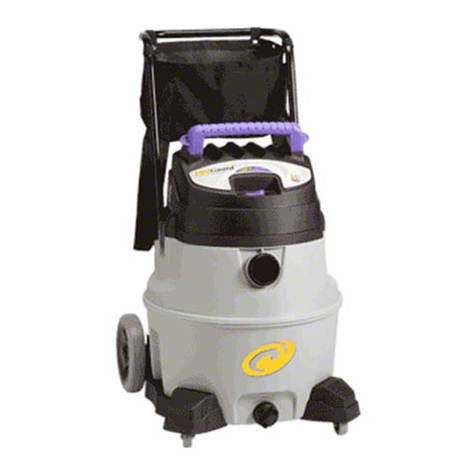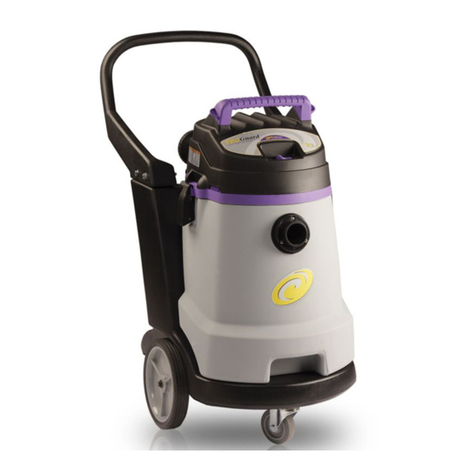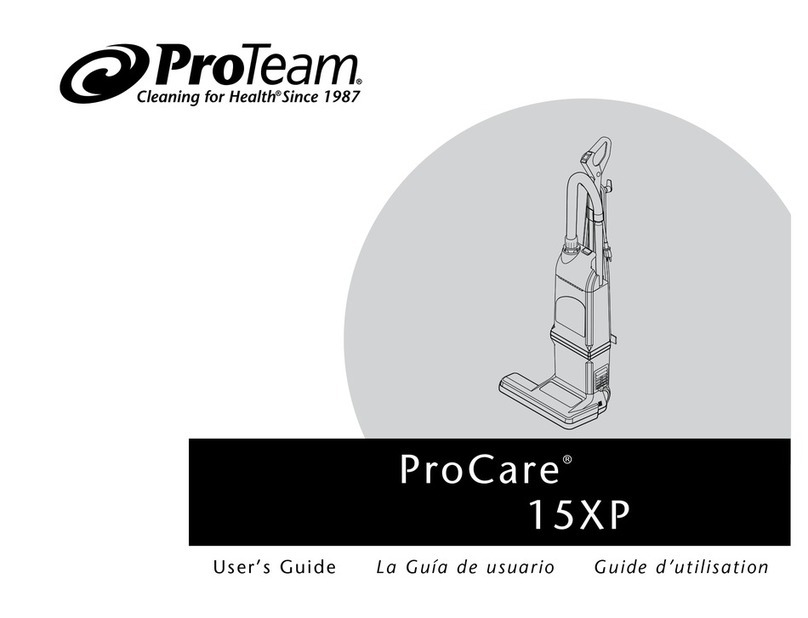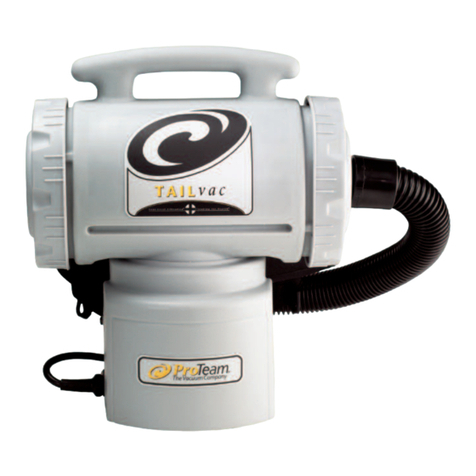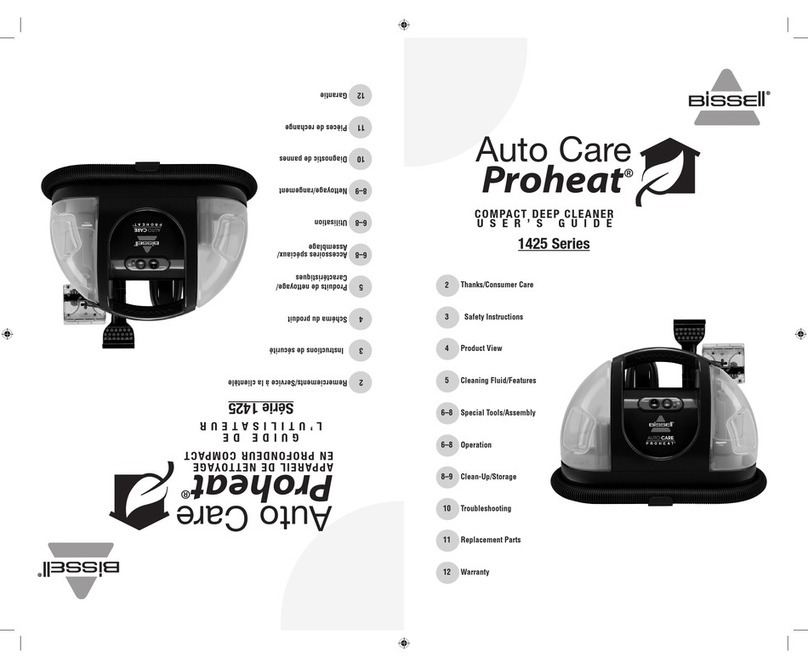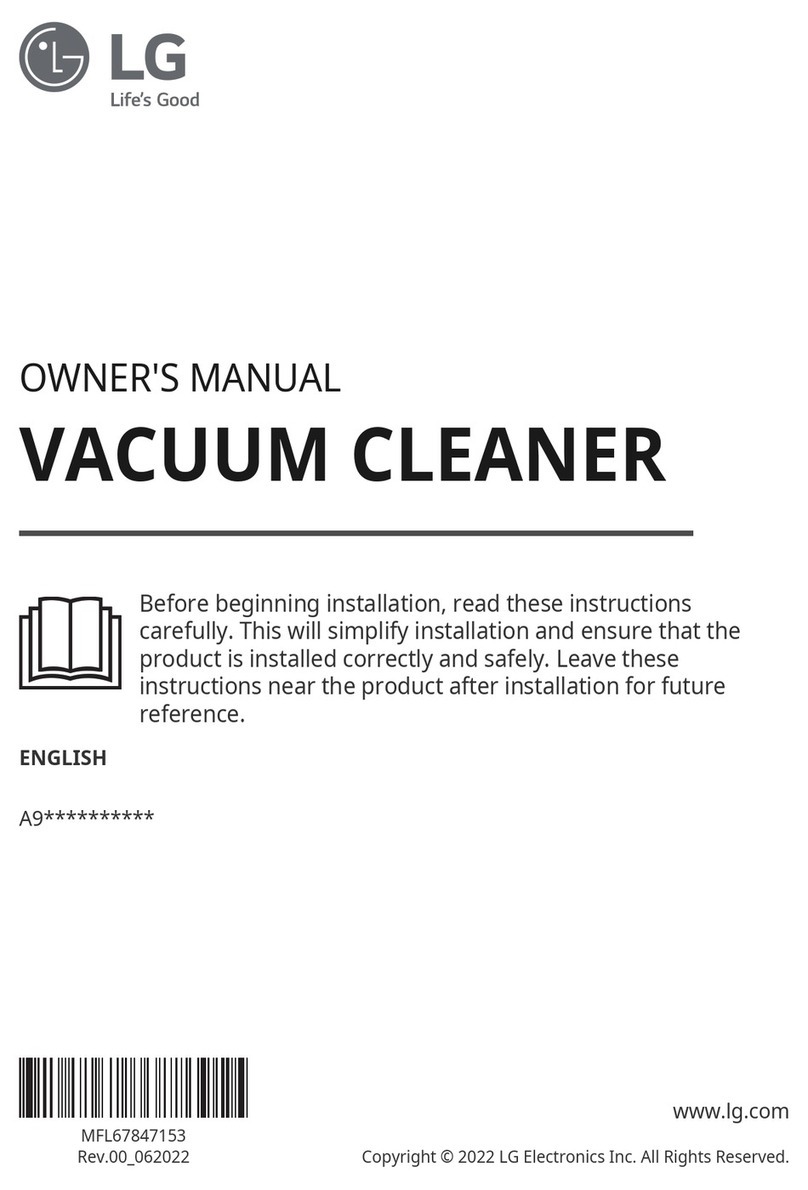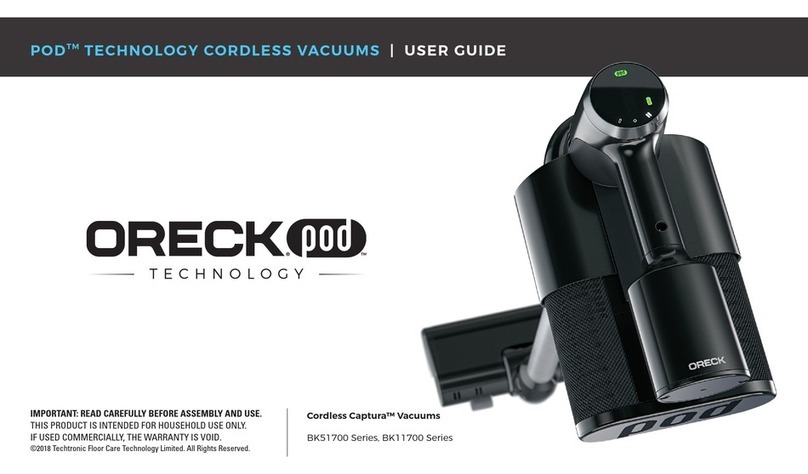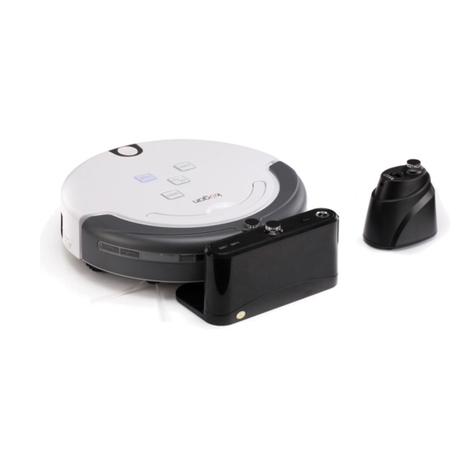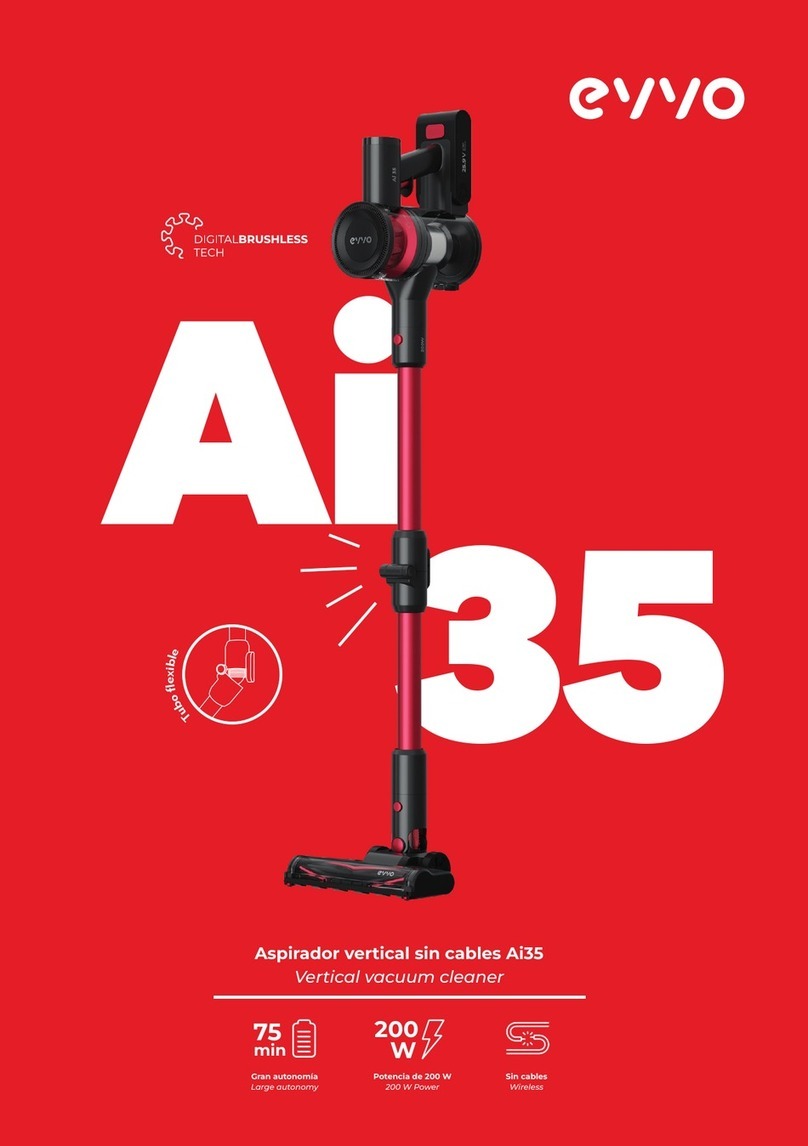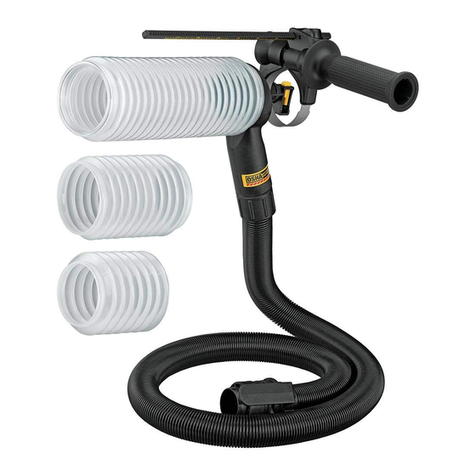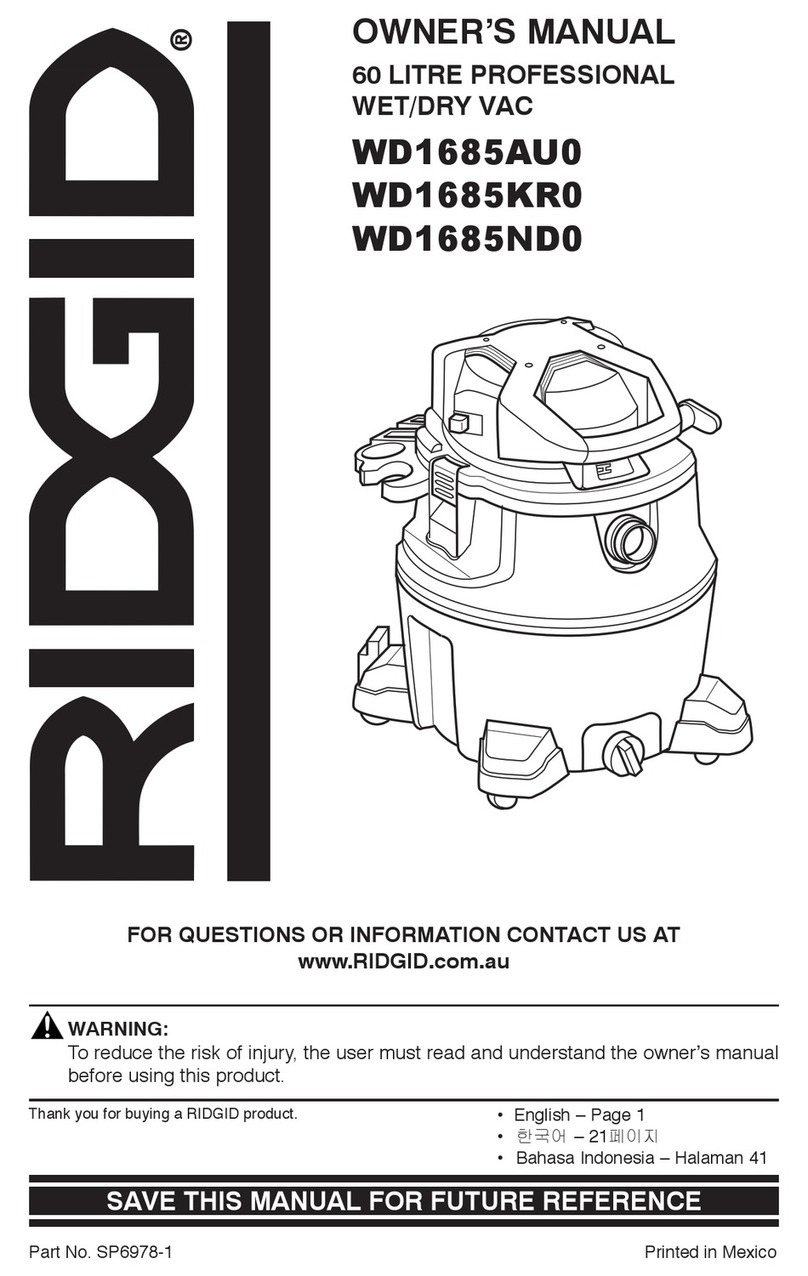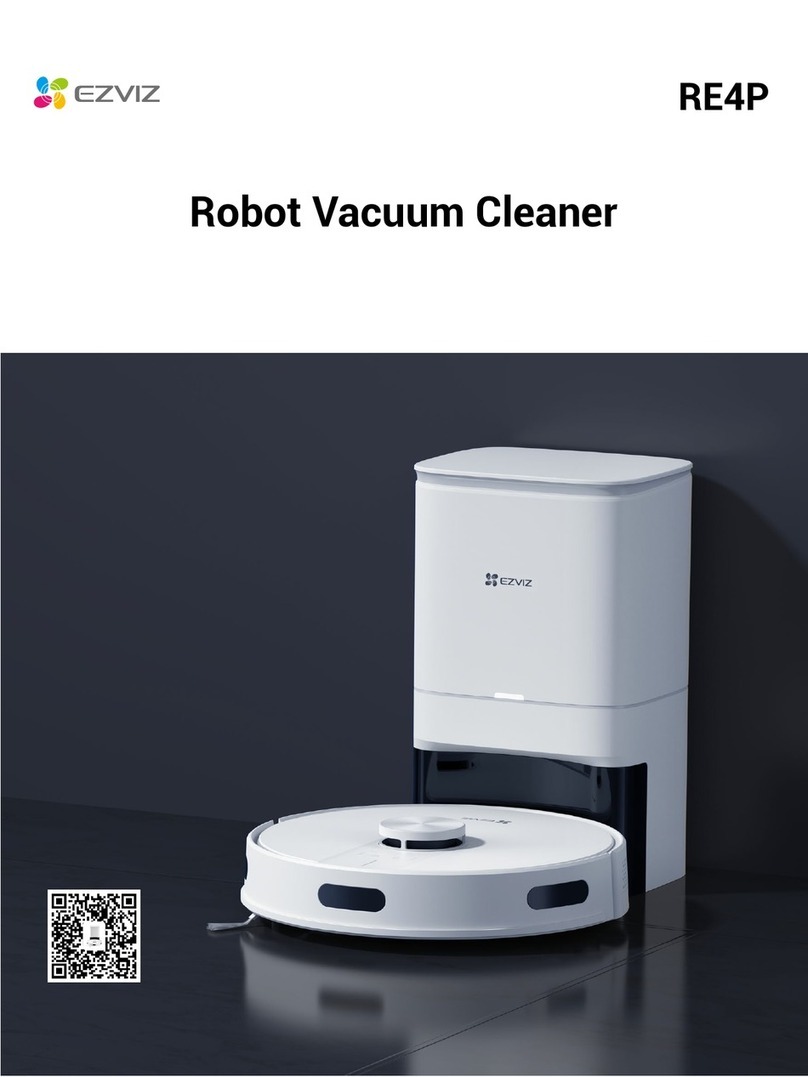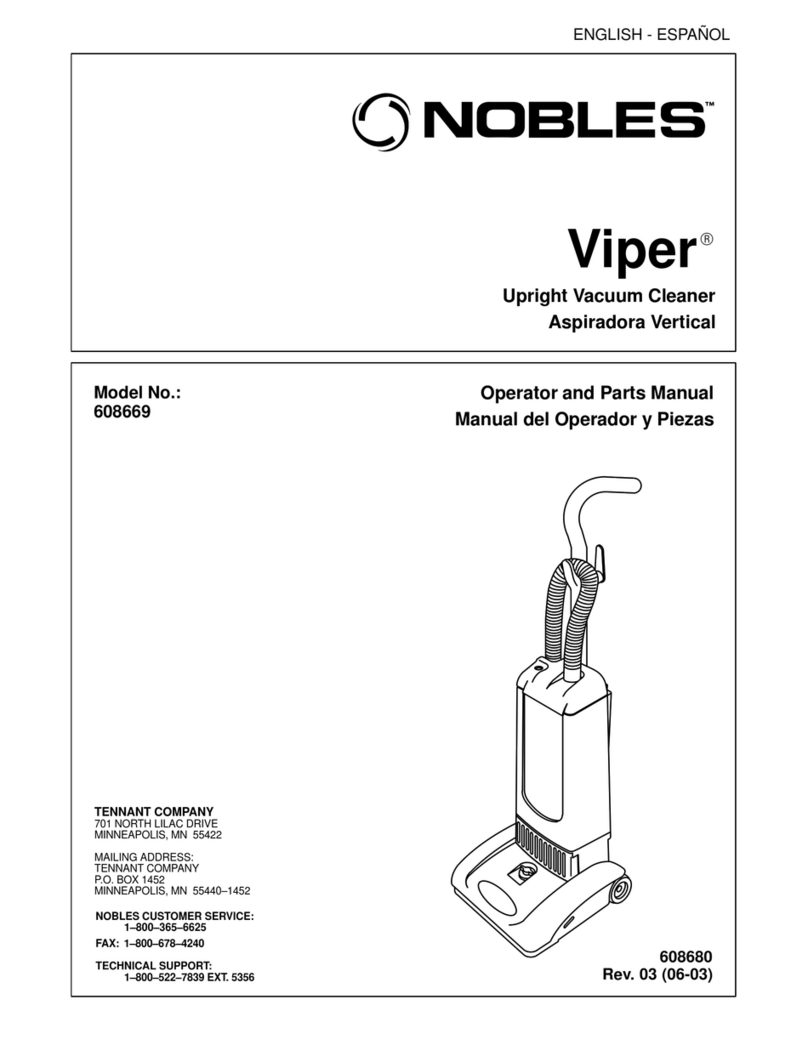Many companies advertise elimination of dust mites in air ducts
for a low price. The price is low because dust mites don’t live in
air ducts. They need dead air pockets where the relative humid-
ity is above 50%. If only 1% of them survive they can repopulate
the colony rapidly at humidity levels higher than 50%. The Sierra
with its various attachments can remove pockets of dust and the
house dust mites from mattresses, sofas, rugs and from behind
beds and furniture.
Clover Mites:
This pest comes in from the turf to overwinter behind the walls,
especially on the sunny side of the house. In early spring, when
the sun heats up the wall, they come boiling out of openings
around the windows and they cover the walls. When touched,
they leave a red stain on the wall. The vacuum is the best way to
remove them without staining the wall. Dusting a desiccant into
the crevices around the window will stop more from coming in.
Other Invaders:
There are numerous other pests that you may be called on to
remove. Pest control textbooks such as the Mallis Handbook on
Pest Control and Smith and Whitman’s “NPCA Field Guide to
Structural Pests” recommend the vacuum cleaner as an alternative
to pesticides to control occasional invaders. This group includes:
box elder bugs, mold or plaster beetles, elm leaf beetles, cluster
flies, face flies, phorid flies, wheel bugs, centipedes, camel crickets,
field crickets, house crickets, daddy long legs (or harvest men),
millipedes, clover mites, pill bugs, scorpions, silverfish, bristle tails,
sow bugs, spring tails, thrips, and weevils. Removing these insects
with the Sierra is the most effective and versatile method in the
industry.
Booklice:
This psocid insect is sometimes found in enormous numbers in
damp situations, especially around books. Reducing the humidity
to below 50% can control them. The Sierra is ideal to remove the
unsightly accumulation of dead booklice on books and shelves.
